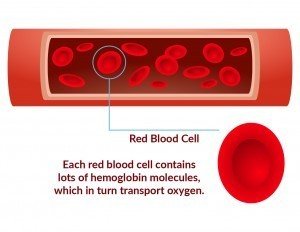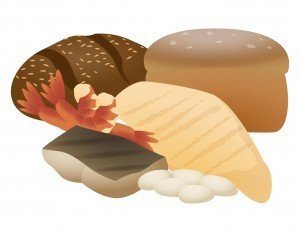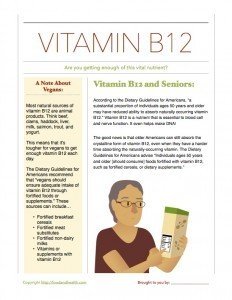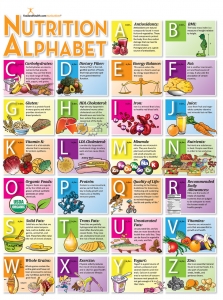Nutrients of Concern: Folate and Iron
 Remember the Nutrients of Concern series we ran about the Dietary Guidelines for Americans? It turns out that -- in addition to calcium, dietary fiber, potassium, and vitamin D, which are of concern for almost all Americans -- there are 3 additional nutrients of concern for specific groups of people in the United States.We're going to tackle 2 of those nutrients today: folate and iron. To learn about vitamin B12, the the 3rd nutrient of concern for a particular population, don't miss the member-exclusive post Nutrients of Concern: Vitamin B12.Let's begin with folate. Folate is a B vitamin, and the man-made form of it is called folic acid. According to the Dietary Guidelines for Americans, "many women capable of becoming pregnant still do not meet the recommended intake for folic acid."You can find folate in the following foods...
Remember the Nutrients of Concern series we ran about the Dietary Guidelines for Americans? It turns out that -- in addition to calcium, dietary fiber, potassium, and vitamin D, which are of concern for almost all Americans -- there are 3 additional nutrients of concern for specific groups of people in the United States.We're going to tackle 2 of those nutrients today: folate and iron. To learn about vitamin B12, the the 3rd nutrient of concern for a particular population, don't miss the member-exclusive post Nutrients of Concern: Vitamin B12.Let's begin with folate. Folate is a B vitamin, and the man-made form of it is called folic acid. According to the Dietary Guidelines for Americans, "many women capable of becoming pregnant still do not meet the recommended intake for folic acid."You can find folate in the following foods...
- Beans and peas
- Dark green leafy vegetables
- Oranges and orange juice
Folic acid, on the other hand, has been added to a bunch of fortified grain foods. The Dietary Guidelines for Americans assert, "Folic acid is added to enriched refined grains to a level that doubles the amount lost during the refining process." So, why should women who are capable of becoming pregnant be sure to get enough folate? It turns out that folate helps prevent neural tube defects, contributing significantly to the health of a baby during the early stages of pregnancy. Some of the most common neural tube defects include anencephaly and spina bifida. These can occur during the first month of pregnancy, which is why folate is so important for all women who are capable of becoming pregnant.How much folate should these women consume? The Dietary Guidelines for Americans recommend, "All women capable of becoming pregnant are advised to consume 400 mcg of synthetic folic acid daily (from fortified foods and/or supplements) in addition to food forms of folate from a varied diet. Women who are pregnant are advised to consume 600 mcg of dietary folate equivalents daily from all sources."Now that we've discussed the whys and hows of folate, let's move on to iron.
So, why should women who are capable of becoming pregnant be sure to get enough folate? It turns out that folate helps prevent neural tube defects, contributing significantly to the health of a baby during the early stages of pregnancy. Some of the most common neural tube defects include anencephaly and spina bifida. These can occur during the first month of pregnancy, which is why folate is so important for all women who are capable of becoming pregnant.How much folate should these women consume? The Dietary Guidelines for Americans recommend, "All women capable of becoming pregnant are advised to consume 400 mcg of synthetic folic acid daily (from fortified foods and/or supplements) in addition to food forms of folate from a varied diet. Women who are pregnant are advised to consume 600 mcg of dietary folate equivalents daily from all sources."Now that we've discussed the whys and hows of folate, let's move on to iron. Iron is a mineral that is key to healthy growth, connective tissue maintenance, and cell function. According to the National Institutes of Health Office of Dietary Supplements, "Iron is an essential component of hemoglobin, an erythrocyte protein that transfers oxygen from the lungs to the tissues. As a component of myoglobin, a protein that provides oxygen to muscles, iron [also] supports metabolism." Unfortunately, the Dietary Guidelines for Americans have revealed that "Substantial numbers of women who are capable of becoming pregnant, including adolescent girls, are deficient in iron."There are two types of iron: heme and non-heme. You can find heme iron in lean meat, poultry, and seafood. Heme iron is more readily absorbed by the body than non-heme iron, which you can find in lentils, spinach, and white beans. Whole grains also contain iron, and many enriched grain foods have iron added to them as well.
Iron is a mineral that is key to healthy growth, connective tissue maintenance, and cell function. According to the National Institutes of Health Office of Dietary Supplements, "Iron is an essential component of hemoglobin, an erythrocyte protein that transfers oxygen from the lungs to the tissues. As a component of myoglobin, a protein that provides oxygen to muscles, iron [also] supports metabolism." Unfortunately, the Dietary Guidelines for Americans have revealed that "Substantial numbers of women who are capable of becoming pregnant, including adolescent girls, are deficient in iron."There are two types of iron: heme and non-heme. You can find heme iron in lean meat, poultry, and seafood. Heme iron is more readily absorbed by the body than non-heme iron, which you can find in lentils, spinach, and white beans. Whole grains also contain iron, and many enriched grain foods have iron added to them as well. Despite the availability of iron in foods, most women don't get enough of it. Getting enough iron is especially important during pregnancy. The National Institutes of Health's Eunice Kennedy Shriver Institute of Child Health and Human Development explains "Pregnant women need more iron than normal for the increased amount of blood in their body and for their developing child." That's why the Dietary Guidelines for Americans recommend that "Women capable of becoming pregnant [should choose] foods that supply heme iron, which is more readily absorbed by the body, additional iron sources, and enhancers of iron absorption such as vitamin C-rich foods." They continue, "Women who are pregnant are advised to take an iron supplement as recommended by an obstetrician or other health care provider."And there you have it! A closer look at two more nutrients of concern. Here is a handout with the highlights from today's post.
Despite the availability of iron in foods, most women don't get enough of it. Getting enough iron is especially important during pregnancy. The National Institutes of Health's Eunice Kennedy Shriver Institute of Child Health and Human Development explains "Pregnant women need more iron than normal for the increased amount of blood in their body and for their developing child." That's why the Dietary Guidelines for Americans recommend that "Women capable of becoming pregnant [should choose] foods that supply heme iron, which is more readily absorbed by the body, additional iron sources, and enhancers of iron absorption such as vitamin C-rich foods." They continue, "Women who are pregnant are advised to take an iron supplement as recommended by an obstetrician or other health care provider."And there you have it! A closer look at two more nutrients of concern. Here is a handout with the highlights from today's post. Don't miss the last nutrient of concern for specific groups! Nutrients of Concern: Vitamin B12 covers the last nutrient we'll discuss in the series. Check out the preview of its handout below...
Don't miss the last nutrient of concern for specific groups! Nutrients of Concern: Vitamin B12 covers the last nutrient we'll discuss in the series. Check out the preview of its handout below... And, as always, there's lots more in the Nutrition Education Store! We're here to help you look your best, right now.
And, as always, there's lots more in the Nutrition Education Store! We're here to help you look your best, right now.




